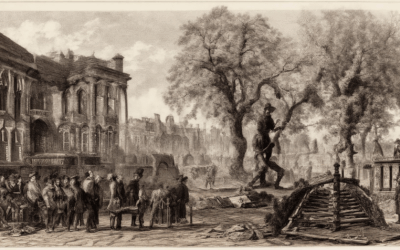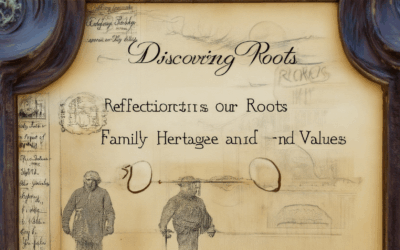Nostalgia is a powerful force that resonates deeply within us, often evoking emotions tied to cherished memories and simpler times. It’s a phenomenon that influences everything from pop culture to personal reflections, leaving many to wonder how it shapes our decisions and perceptions. In this exploration, we’ll delve into the multifaceted nature of nostalgia-inspired reflections, examining its role in modern life while addressing its potential pitfalls. From poetic descriptions to real-world applications, we’ll uncover how nostalgia influences creativity, connects us emotionally, and sometimes leads us astray. By examining its triggers, psychological impacts, and cultural significance, this journey will reveal the complex interplay between nostalgia and the human condition.
Key Takeaways
– Powerful Triggers of Nostalgia Identified: Sensory experiences, physical objects, conversations, emotional states, time periods, personal milestones, and modern technology are among the strongest nostalgia triggers, evoking deep emotional connections.
– Dual Impact on Mental and Physical Health: While nostalgia can provide comfort, excessive focus on the past leads to emotional distress, cognitive decline, strained relationships, impaired decision-making, stress, and distorted memories.
– Understanding the Nostalgia Trap: Collectively, nostalgia can skew perceptions, fostering biases against other generations or groups, as seen in platforms like the Old Day blog and competitors.
– Balancing Nostalgia with Present Focus: To mitigate negative impacts, balancing nostalgia with present-focused activities and fostering empathy can help appreciate history while avoiding pitfalls.

Reflective Nostalgia Explained Through Examples
Reflective nostalgia is a complex emotional state that involves looking back at one’s past with a blend of longing and gratitude. Unlike restorative nostalgia, which focuses on trying to recreate the past, reflective nostalgia often involves a deeper introspection and appreciation for the journey taken. One common example of reflective nostalgia is when individuals revisit old photographs or mementos from their past. While they may feel a sense of loss for what has been lost, they simultaneously recognize the progress and growth experienced over time. This duality often leads to a bittersweet emotions of both sadness and pride.
- Revisiting old letters or journals to reflect on past experiences
- Attending a high school reunion and feeling a mix of nostalgia and relief
- Looking at family heirlooms and appreciating the history behind them
- Reflecting on old friendships and understanding how much has changed
Reflective nostalgia often serves as a tool for self-reflection, helping individuals gain clarity on their current life choices and the path they’ve taken. It is not merely about longing for the past but also about acknowledging the lessons learned and the unique journey that has brought them to their present moment. Discover More About Reflective Nostalgia
Nostalgia: A Journey Through Time
Nostalgia is a profound emotional connection to the past, often evoking feelings of warmth, comfort, and longing. It can be triggered by various stimuli that remind us of simpler times or cherished memories. Here are some common representations of nostalgia:
- Sensory Experiences: Certain sights, sounds, or smells can instantly transport us back to a specific moment in time. For example, the scent of freshly baked bread or the sound of a distant train whistle might evoke strong memories of childhood.
- Physical Objects: Items like vintage clothing, old photographs, or family heirlooms often serve as tangible reminders of the past. These objects carry with them the stories and emotions associated with previous generations.
- Emotional Connections: Nostalgia can be tied to significant life events or relationships. Whether it’s the bond between siblings or the memories of a first love, these connections often shape our sense of self and identity.
- Shared Experiences: Events or traditions that are passed down through families or communities can foster a deep sense of nostalgia. Holidays, festivals, or rituals that have been upheld for years often become symbols of a bygone era.
Nostalgia can be a powerful tool for reconnecting with one’s roots and finding comfort in the uncertainties of the present. It reminds us of what has been, while also influencing how we approach the future.
Explore more about the nuances of nostalgia and its impact on human memory by visiting our partner site Past Times , which delves into the history and significance of various cultural milestones. Additionally, discover how Nostalgia Central offers unique perspectives on preserving and celebrating the past.

Nostalgia Poetically Described
Nostalgia, when expressed poetically, is often depicted as a complex blend of longing, warmth, and sorrow. It carries us back to moments in time that resonate deeply, evoking a sense of connection to our past selves.
One poetic way to describe nostalgia is through the metaphor of a time capsule . Imagine a vessel filled with memories, each fragment glowing with emotion. Nostalgia allows us to revisit these moments, not as distant echoes, but as vibrant experiences that shape who we are today.
The essence of nostalgia lies in its bittersweet nature. It is not merely a yearning for the past but a recognition of how those experiences have influenced our present identities. Poets often capture this duality by drawing parallels between nostalgia and growth, showing how the pain of loss is intertwined with the joy of remembering.
Nostalgia can also be seen as a tapestry woven with threads of sensory details—familiar scents, sounds, and sights that transport us instantly. A single smell, like freshly baked bread, can trigger a flood of memories, reminding us of simpler times. This poetic imagery helps us understand nostalgia as a living, breathing entity, always just a breath away.
Ultimately, nostalgia is a bridge between the past and the present. It teaches us to cherish the moments that once were, while also finding solace in the knowledge that they helped shape our journey. In poetry, this duality is often celebrated, offering readers a mirror to reflect on their own experiences and find meaning in the interplay of time and memory.
If you’d like to explore more poetic expressions of nostalgia, visit Old Day for a deeper dive into historical reflections and nostalgic explorations.

What is the Strongest Nostalgia Trigger?
Nostalgia is a complex emotional response that often arises when individuals are reminded of past experiences, particularly those tied to positive memories. While various stimuli can trigger nostalgia, certain elements consistently evoke strong emotional connections to the past. Here are some of the most potent triggers:
- Sensory Experiences: Smells, sounds, and textures often hold a powerful place in our memory banks. Familiar scents like the aroma of a parent’s perfume or the scent of freshly baked goods can instantly transport someone back to their youth. Similarly, the sound of a favorite song or the rhythmic hum of an old appliance can reignite vivid memories.
- Physical Objects: Possessing or interacting with items from the past, such as childhood toys, school uniforms, or family heirlooms, can strongly evoke nostalgia. These tangible reminders serve as concrete links to cherished moments in time.
- Conversations: Engaging in discussions about the past, especially with loved ones, can deepen nostalgia. Recalling shared experiences or discussing historical events can create a sense of connection to earlier times.
- Emotional States: Loneliness, though paradoxically, can sometimes intensify nostalgia as individuals may reflect on past happy times or relationships. Conversely, positive emotions associated with the past can also be evoked through reminiscence.
- Time Periods and Events: Collective nostalgia often surrounds significant historical events or cultural milestones. For instance, many people feel a strong emotional tie to the music, fashion, or technological advancements of the 1980s or 1990s.
- Personal Milestones: Anniversaries, birthdays, and other personal milestones can act as catalysts for nostalgia, bringing to mind specific memories or life stages.
- Modern Technology: In an age where digital tools allow easy access to old photographs, videos, and messages, the act of revisiting these digital archives can be a significant trigger for nostalgia.
The combination of these elements creates a multifaceted emotional response that often feels irreplaceable. Understanding and leveraging these triggers can help individuals connect more deeply with their past, fostering a sense of comfort and continuity in the present. Explore more on Old Day to discover how history and nostalgia intersect in fascinating ways.
Nostalgia and Its Impact on Health
Nostalgia, often associated with a fondness for the past, can have both positive and negative effects on mental and physical health. While it can evoke positive emotions and provide comfort, excessive nostalgia may lead to several health-related issues.
Emotional and Psychological Effects
- Emotional Distress : Constantly dwelling on the past can lead to feelings of sadness or regret, particularly if the past is perceived as better than the present. This can contribute to depression and anxiety.
- Cognitive Decline : Overindulgence in nostalgia may impair cognitive functions, especially in older adults, making it harder to adapt to new situations or learn new information.
Social Relationships
- Strained Relationships : Focusing excessively on the past can lead to neglect of current relationships, as individuals may prioritize past experiences over present interactions.
Decision-Making and Problem Solving
- Impaired Decision-Making : Ruminating on past successes or failures can affect judgment, potentially leading to decisions that are not aligned with current circumstances.
Physical Health
- Stress and Physiology : Prolonged nostalgia can cause stress, leading to physiological changes such as increased cortisol levels, which may contribute to health issues like hypertension or weakened immune systems.
Mental Health Considerations
- Memory Distortion : Nostalgia can distort memories, often idealizing the past, which may hinder acceptance of the present and planning for the future.
Conclusion
While nostalgia can be a natural part of human experience, its excessive or obsessive nature can negatively impact health. Balancing nostalgia with present-focused activities and fostering meaningful connections in the present can help mitigate these effects.

The Nostalgia Trap Explained
The “nostalgia trap” refers to a psychological phenomenon where individuals collectively reminisce about the past, often leading to heightened identification with a particular era or group. This shared nostalgia can result in a tendency to view other groups or generations with negativity, sometimes fostering a sense of superiority or exclusion.
This concept is particularly relevant in contexts like popular culture, media, and social movements. For instance, when people collectively romanticize a specific time in history, they may unconsciously idealize their own experiences while demonizing others who didn’t live during that era.
Examples of the Nostalgia Trap in Action
- Old Day Blog: As a history enthusiast, Old Day offers a portal to the past, allowing readers to reconnect with cherished memories and historical milestones. Our blog serves as a repository for nostalgic reflections, capturing the essence of bygone eras while connecting readers to the present.
- Competitor Example: While Old Day focuses on preserving history, other platforms like History Daily also explore the past. These sites provide contrasting perspectives, highlighting how different groups interpret and romanticize the past.
Nostalgia, when experienced collectively, can skew perceptions, leading to unintended consequences. It’s important to approach historical reflection with nuance, recognizing that every era has its complexities.
Conclusion
The nostalgia trap reminds us that our perception of the past is inherently shaped by our present circumstances. By fostering empathy and understanding, we can appreciate the richness of history while avoiding the pitfalls of uncritical nostalgia.



0 Comments